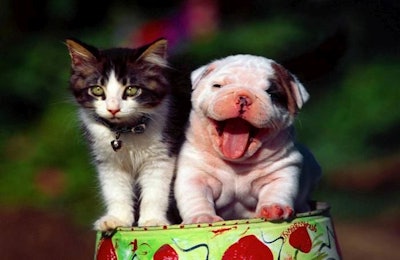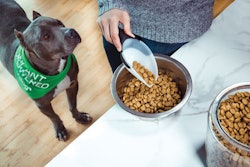
In 2017, GFK market researchers recorded 4,554 new pet food and treat launches on specialty retailers’ shelves, which included rebranding of existing products. Of those thousands of pet food product launches, two established categories dominated the marketing claims about those products, while three emerging trends rose in prevalence.
“Innovation is slightly down this year, but that’s really because the players that enter into the space have either left because they didn’t have any success or the ones that remain are now trying to find their sweet spot,” said Natasha Davis, client service manager for GfK, said during her presentation at Petfood Forum 2018.
“It [new product launches] is a good indication of the direction that the channel is going in,” Davis said. “So in terms of natural, grain-free, limited ingredients, those are some of the more established categories. In each year we see about the same number of items hit shelf.”
Two most frequent marketing claims for new pet food and treats
- Natural
Natural pet foods and treats were the predominant new products in 2017. Seventy-eight percent of new pet foods and treats launched in 2017 were marketed as natural. That figure remained relatively steady over the past few years. In 2015, 82 percent of new pet food products used natural claims.
- Grain-free
The second most frequently used marketing claim was grain-free. Fifty-three percent of new pet foods and treats introduced on pet specialty retail market used grain-free claims in 2017. That represented an increase from 2015, when 45 percent of new pet foods and treats highlighted grain-free claims.
Three emerging pet food and treat categories
Fewer new pet foods and treats featured the other three other categories in the top five. Although they made up a smaller percentage, some of these categories saw growth during the past few years.
- Small/toy dog
Pet foods and treats created for smaller dogs grew to become 11.7 percent of the total in 2017, up from eight percent in 2015. The growth of small breed dog foods reflects the growing popularity of diminutive dogs among both millennials and baby boomers.
- Limited ingredient
Limited ingredient claims appeared on seven percent of new pet foods or treats, up from 5.4 percent in 2015. However, there was a slight decrease from 2016, when 7.3 percent used limited ingredient claims.
- Meal enhancers
Meal enhancers, such as toppers, have increased from 1.6 percent of new pet food and treat introductions in 2015 to five percent in 2017. Within the meal enhancer realm, certain varieties have outperformed others, said Davis.
“In terms of growth, the 100 percent freeze dried meal enhancers have outpaced that of wet for the last three years,” she said. “Now, much of this growth comes from new entrants into the space. So who knows where that growth will be in the next couple of years? But nevertheless, consumers seem to be adapting to freeze-dried at a slightly faster rate than that of wets and liquids.”
Along with these five categories, Davis mentioned frozen pet food as growing category of new product launches. On the other hand, freeze-dried full meals and kibble+ freeze-dried declined in percentage of new product launches.

















